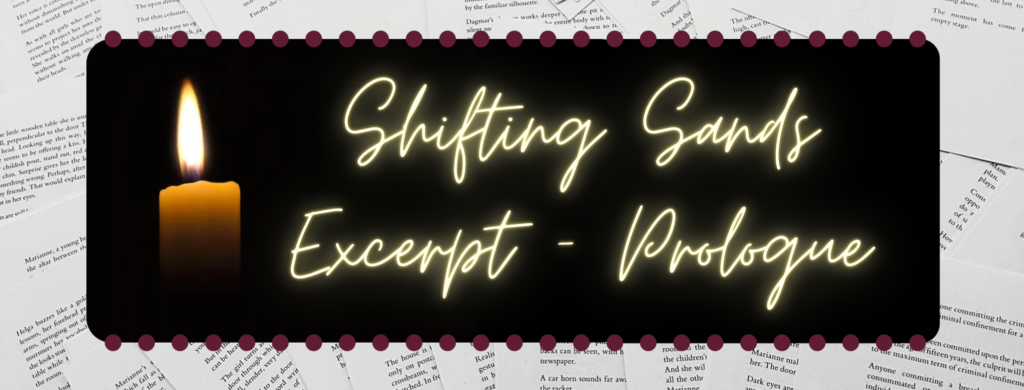I’m realising that a lot of the things I’m interested in are about self-discovery. A big thread through my research is trying to understand how stories change and evolve, but hidden beneath it is me trying to understand the things that have influenced me and the interests I have. Though I rarely admit it, it’s all about me. I guess it’s time you all knew that. This week, in the lazy, non-research side of my self-exploration, I took the 16personalities MBTI test again. For once, it seemed to actually get me! So, since I’ve been semi-obsessed over the past week, I figured that I should use this renewed interest in the MBTI and use it to test the characters of Shifting Sands. This week, it’s Aamarin.
Looking at MBTI and characters
The MBTI, or Myers Briggs Type Indicator, puts you into one of sixteen categories by looking at how you see the world and interact with it. There are four pairings – Introversion and Extroversion, iNtuitive and Sensing, Thinking and Feeling, Judging and Perceiving – and your “type” is made up of a combination of one from each pair. I, for example, am apparently INFJ, meaning Introverted, iNtuitive, Feeling, and Judging. While there are those who think it’s a great test for figuring out your career side, I honestly kind of lump it in with horoscopes: fun to read, sometimes useful for self-reflection, but only really has as much meaning as you read into it. As a writer, however, the MBTI can be a useful tool for examining your characters.
Looking at the MBTI in characters is rare from a research side. I looked into the MBTI type of Cinderellas in film adaptations in 2015 (undergrad dissertation) and only found one study similar looking at librarians in film. Am I now distracted thinking of Evelyn from The Mummy? Yes. But, back on the main subject, there have been plenty of non-research takes on the MBTI for various characters. Who hasn’t seen the massive Disney Princess MBTI charts? Not gonna lie, I kind of judge them over whether they get Cinderella right. She’s ISFP according to my research!
Using the MBTI in character design
I have to admit that, as a writer, I’m probably a plantser. I plan some things, but need to leave much of it up for discovery along the way. Otherwise we crash into the problem where a character won’t die the way I planned. This means that carving out the MBTI types for each of my characters isn’t really my thing. It is, however, a fairly common piece of advice in writing. This blog post by Kristin Kieffer, for example, talks about how basing your characters on the MBTI can help them be less cliched and more rounded. Another example here talks about what this can bring to your writing, including in creating conflict between your characters. As with Egri’s character skeleton and other methods of planning out characters, it’s all about getting to know them so that you can write a more realistic story. Believable characters are key!
While I don’t forward plan enough to do the MBTI on my characters ahead of time, I am curious as to what types they ended up being. As my research is looking at the author and how their identity may affect the story, I’m kind of wondering how my personality may have shaped the personalities of my characters. Are they all the same type as me? Or are they the opposite? In reading, I’ve found that I don’t like reading characters that are too like me. They whine too much. But they also can’t be too bull-headed. I get annoyed by too many stupid decisions. So, in testing the characters of Shifting Sands, maybe I’ll uncover why I like writing some more than others!

Testing Aamarin
Aamarin seems like a natural choice in selecting the first character to test in the MBTI. To me, he’s quite a contradictory character. He wants to be popular, to have friends around him, and to connect with other people, but he also loves quite spaces and time for reflection. He’s ambitious and likes order, but his favourite memories are the brief moments of childhood freedom with his friends. The next wave will also mean it’s bye bye Aamarin, hello Nahlena, so it seems like a good idea to look at him before he goes. So, who is Aamarin?
From my analysis, Aamarin is ISTJ. This means he is:
Introverted.
In the test I completed for Aamarin, this was incredibly borderline, which makes sense. He wants to connect with people but it doesn’t necessarily feel natural to him. As with extroverts, he does like the spotlight, but this is more related to his ambition than a real love of the attention. His introverted side wins out, however, as he would rather spend lots of time in the records room than in a crowd.
Sensing.
While this also came up as borderline in the test, Sensing makes a lot of sense to me. Aamarin likes to have clear evidence to influence his decisions. This can lead to indecisiveness when he has a gut feeling about something as he would rather wait to have hard evidence.
Thinking.
Aamarin prefers to use logic to solve problems, again linking well with his Sensing preference. He always wants to appear objective, making decisions based on a well-thought out weighing of the options. This means that he will sometimes discard the emotional responses of others and even himself (leading to yet more indecision).
Judging.
The Judging and Perceiving preference relates to how the characters plans ahead. Aamarin likes a plan, as shown by how heavily weighted he tested towards this preference. He likes to be organised and orderly. If in doubt, he goes back to “the plan” and won’t go away from it.
Thoughts on the MBTI of Characters: Aamarin
This reading of Amarin’s MBTI character traits is interesting. The test does seem to align with the way I see the character, but I do wonder if being very in between in two areas and then off to the far extreme in another means anything. His indecisiveness coming through in the testing actually explains a lot about the writing process with Aamarin. I knew what his second chapter was going to be from the start of writing. The first chapter, by comparison, was painful. I re-wrote it in a few different ways several times before eventually landing on the version I’m somewhat pleased with. Whether this comes from me as the writer or the character naturally is a question worth future exploration. I’m happy to see that he’s not just a replication of me, either way!
I’ll do this again with the other characters but, in the meantime, over to you. Do you know your MBTI type? And if you’re a writer, have you ever used the MBTI in your character crafting?



